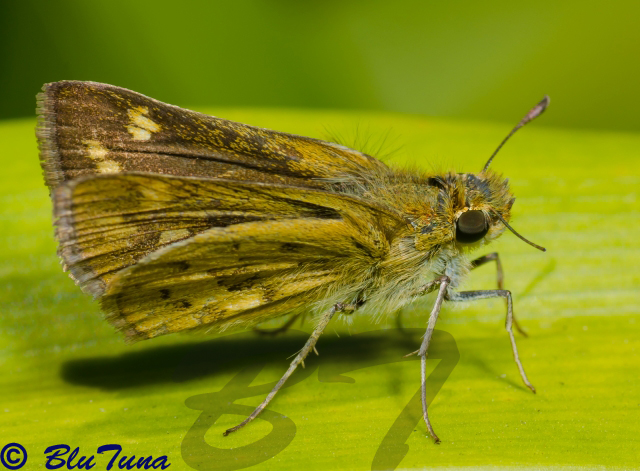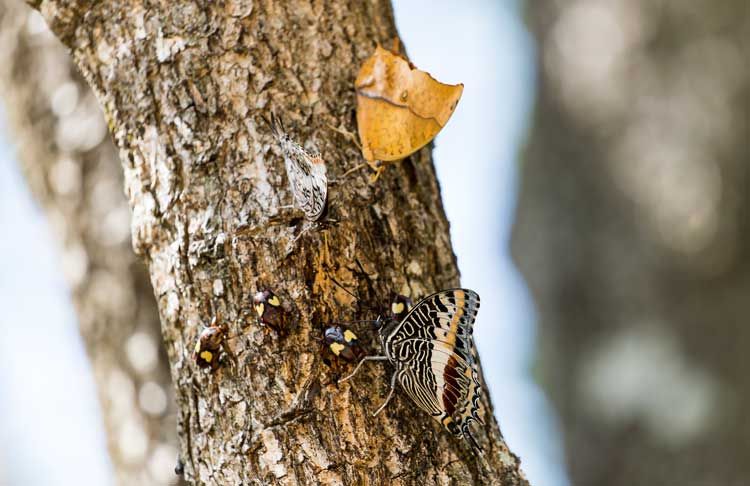Family: Hesperidae. Subfamily: Coeliadinae
 © BluTuna
© BluTunaMagaliesberg, Gauteng
Description
Wingspan: ♂ 55–65 mm. ♀ 63–70 mm.
Wings greyish brown on the upperside, hind wing with a large yellow-brown discal area and anal angle with orange cilia. Underside of hind wings is brown with a white hindwing band with a row of three or four black spots. The tail of the hind wings has an orange fringe.
Similar species: There are four other species of Coeliades in the region. Coeliades forestan lacks black spots. Coeliades anchises has a single black spot on the white band.
Distribution
Mozambique, Swaziland, Lesotho, Namibia, Botswana, Zimbabwe; eastern half of South Africa (Limpopo Province, Mpumalanga, North West Province, Gauteng, Free State Province, KwaZulu-Natal, Eastern Cape Province).
Habitat
Savanna and the edges of forest and coastal bush. Often observed feeding at flowers and occasionally sucking at mud. Females are usually observed in the vicinity of their food plants.
Biology
Flight period: Continuous broods, all year in warmer areas; peak September–April.
Foodplants: A wide range of plants, including Indigofera, Acridocarpus and Combretum species, but prefers the Lesser Moth-fruit Creeper Sphedamnocarpus pruriens.
Links: Subfamily Coeliadinae - Afrotropical Butterflies and Skippers



 © BluTuna
© BluTuna © BluTuna
© BluTuna © BluTuna
© BluTuna © Pumbaa
© Pumbaa